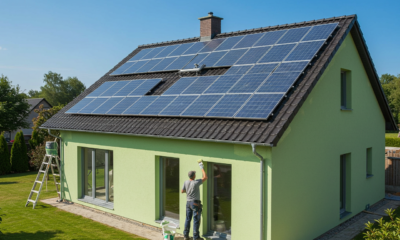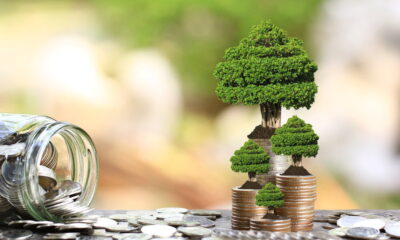

Features
Green Home Improvements to Improve Accessibility for Persons with Disabilities
We previously cited a poll showing that 77% of Americans want to live more eco-friendly lifestyles. However, they don’t all know how to do so. Sadly, many have other more pressing problems, such as trying to survive with a disability.
An estimated 42.5 million Americans are suffering from disabilities. Many of them need to make major changes in their homes to live comfortably. The good news is that these changes don’t have to harm the planet in the process.
Ways that People with Disabilities Can Make their Homes More Accessible without Harming the Planet
There are a lot of things that people with disabilities can do if they want to make their homes more accessible. Unfortunately, their options are more limited if they are concerned about not harming the planet in the process. The good news is that there are still a lot of great eco-friendly home improvements that they can make if sustainability is also a top priority We talked about some of the best eco-friendly home improvements people can make in our previous articles, but some of them are helpful for people with disabilities in particular.
One option is to use an economical lift for home. This can help people that can’t walk easily get around the home while using less energy than traditional lifts.
Today’s Homeowner has some great tips on ways that people with disabilities can change their homes to be more accessible in the eco-friendliest ways possible. We encourage homeowners to read this article for more insights. Here is a synopsis of some of their tips.
First of all, it is a good idea to make home improvements such as installing ramps, widened doorways, and accessible bathroom fixtures that don’t require any energy to use. All of these investments make it easier for people with disabilities to use their home, but don’t leave a larger carbon footprint.
Another thing that they should consider is making green energy improvements such as putting in LED lighting, buying programmable thermostats, and getting energy-efficient appliances. All of these things can help homeowners with disabilities reduce their energy consumption and lower utility bills while maintaining comfort. Another thing that they should consider is getting green building materials and using eco-friendly home improvements. This can include using recycled content materials, non-toxic finishes, and water-saving fixtures. These can all help lower the environmental impact and promote healthier indoor air quality for residents with disabilities. These strategies can do a lot to help make homes greener and more accessible.
Nuance the Improvements for the Homeowner
Ecowatch author Kristina Zagame talked wrote an article titled Building and Designing Eco-Friendly Homes for People With Disabilities, where she talks about the importance of making eco-friendly home improvements to make homes more accessible for people with disabilities. One of the things that she suggested is making sure the improvements are designed around the needs of the homeowner.
“Not everyone has the luxury to build a new home or make extensive home mobility upgrades. If you’re trying to make a home more accessible and safe for a loved one, there are some simple upgrades you can make that are more budget-conscious. First, consider the abilities of the person you are modifying the home for and make a list of goals. Then, go room by room and make appropriate accessibility upgrades,”
Make the Right Eco-Friendly Improvements for People with Disabilities
There are many great green home improvements that can improve accessibility for people struggling with disabilities. Some of the most important features that they can invest in include setting up ramps, making widened doorways, and putting in bathroom fixtures. All of these changes can make it easier for people with disabilities to move in their homes more easily and comfortably.
They can also setup energy-efficient improvements such as putting in LED lighting and programmable thermostats. These changes will both reduces energy use and also make the home more comfortable for people that can’t get up easily.
Finally, people with disabilities should consider using eco-friendly building materials when making these changes. Examples of eco-friendly building materials include recycled content materials and non-toxic finishes. Green building materials help create home improvements that lead to a more accessible and eco-friendlier home. Anyone with disabilities should make both sustainability and comfort a top priority. This will help them lead happier and healthier lives in the years to come. We also have some more articles on green home improvements if you want more insights.


























